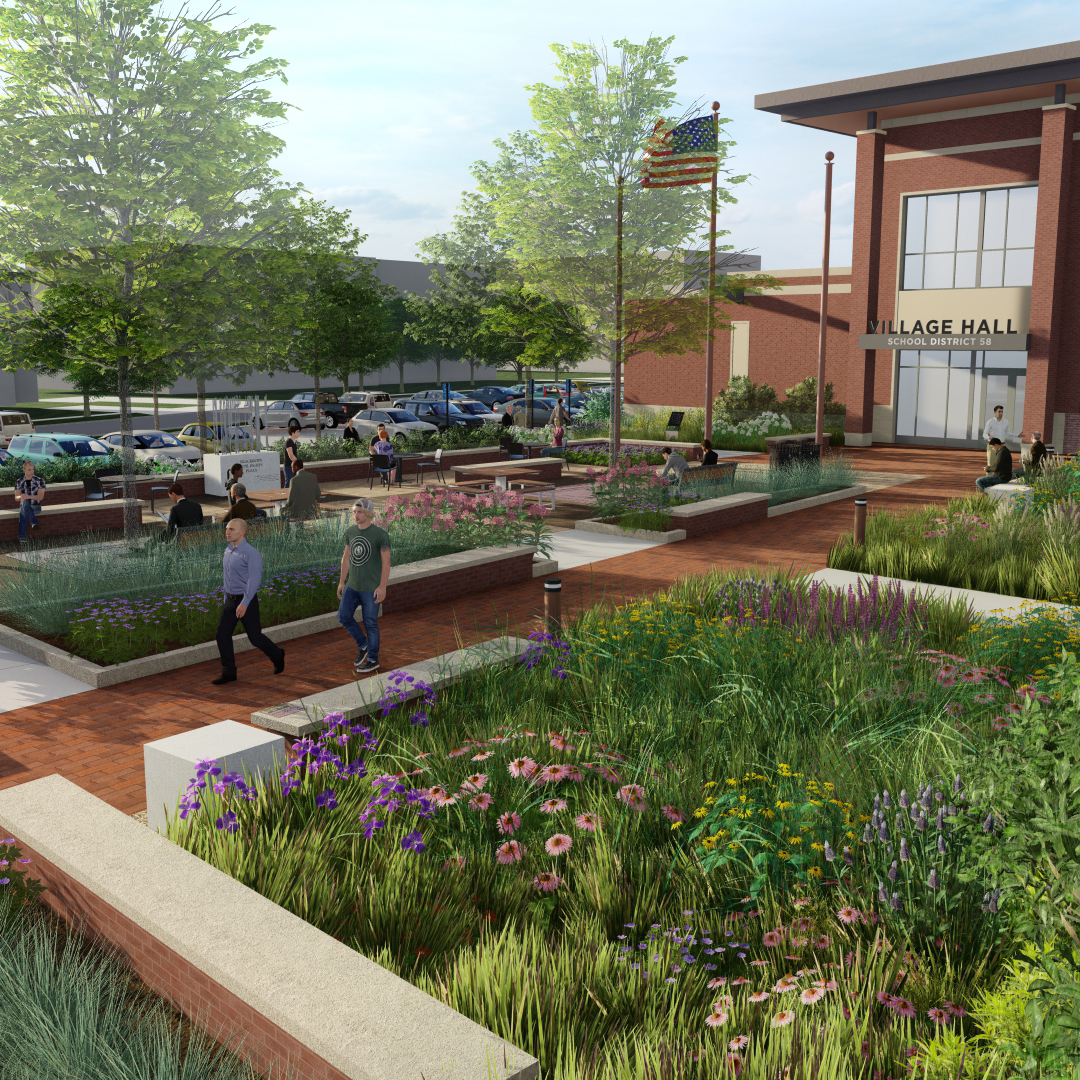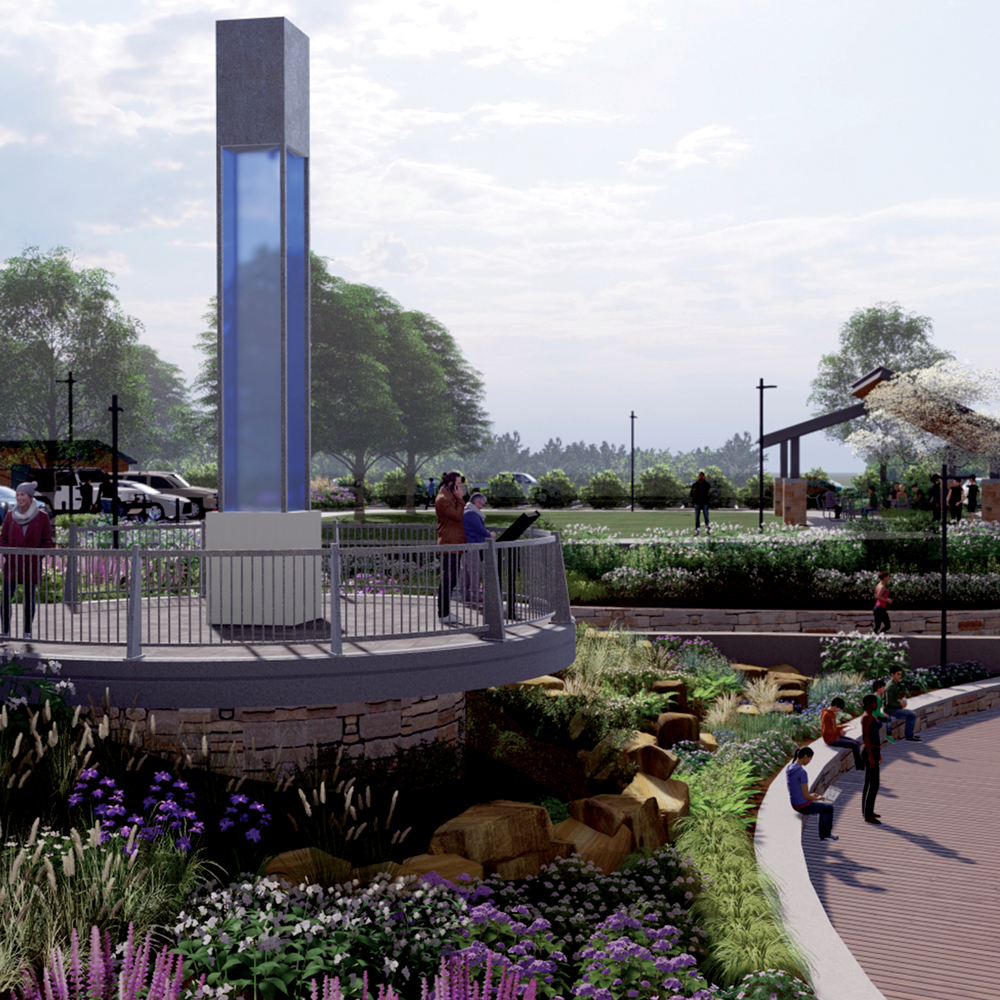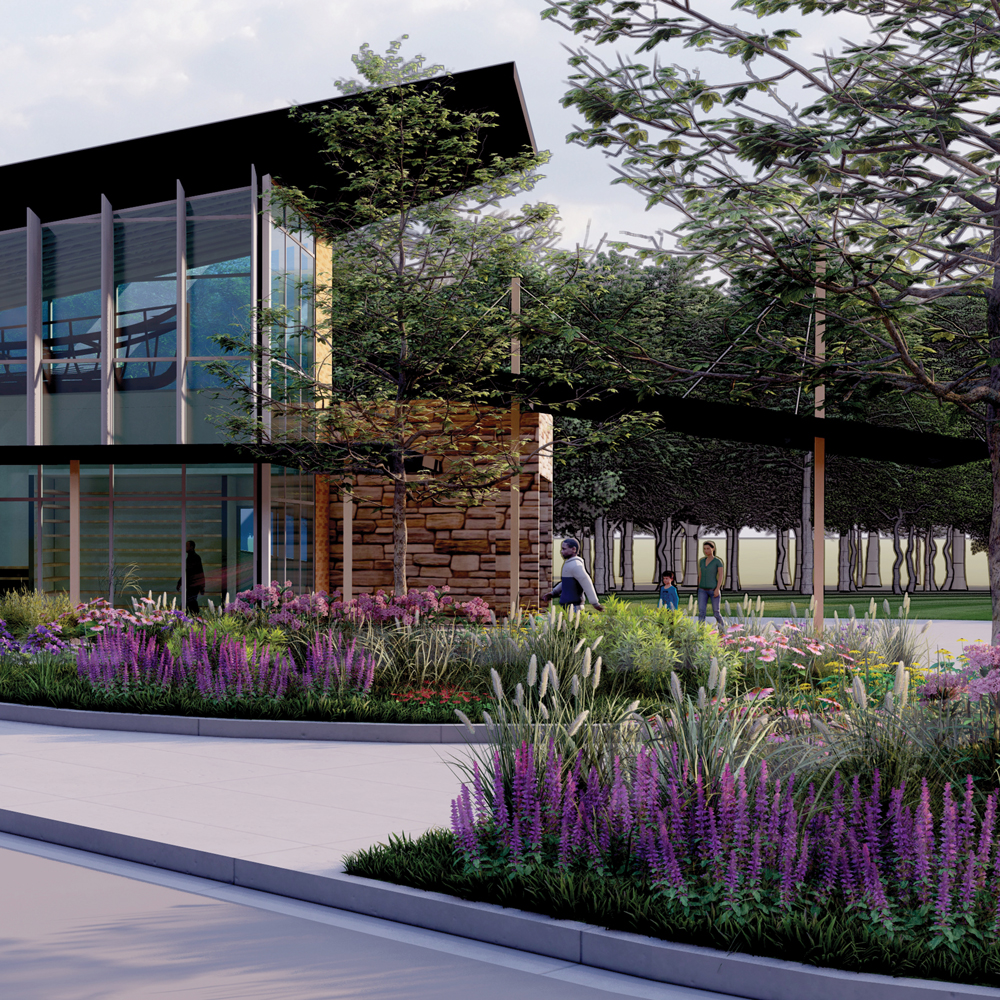Are you a city manager or civic leader? We know your job is a delicate balancing act as you face a multitude of challenges in creating urban environments that are sustainable, culturally authentic and economically viable. In this complex setting, turning to the expertise of landscape architects and land planners can be invaluable. Landscape architects literally shape the world in which we live and can have an incredibly positive impact on our cities, community spaces, ecosystems and society.
Plan and Design for Sustainability
Landscape architecture is key to sustainable city planning. By designing green infrastructure — such as urban parks, green roofs, rain gardens, and urban forests — landscape architects help manage stormwater runoff, reduce urban heat islands, and enhance biodiversity. This approach helps to improve environmental health and create resilient urban spaces capable of adapting to climate change. Urban greenery can play a significant role in absorbing atmospheric carbon dioxide. In fact, according to a Columbia University study, trees, shrubs, flowers, herbs, and grasses in the five boroughs of New York City collectively absorb over 40% of the city’s total atmospheric carbon dioxide emissions on a typical summer afternoon.
Create and Enhance Public Spaces
Public spaces are vital to community life, and landscape architecture excels in creating and revitalizing these areas. This includes designing master plans, plazas, civic buildings and water fronts that promote community health and well-being. Well-designed public spaces foster social interaction, community engagement, and a sense of belonging, creating a healthy quality of life and a greater sense of satisfaction with their city governments. One key study focused on civic engagement shows that residents living near popular public parks are more likely to be satisfied with their local government institutions. A survey of over 5,000 respondents in 26 U.S. communities found 29% greater satisfaction with their parks and recreation department, 14% greater satisfaction with police, and 13% greater satisfaction with their mayor.
“We have enjoyed a long relationship with Hitchcock Design Group and are currently working with them on several new projects that will enhance our communities and the lives of our residents.”
Gary Major, Executive Director | West Chicago Parks District
Stimulate Economic Development
Simply put, landscape architecture and planning significantly contribute to economic development. Attractive and well-maintained public spaces can draw businesses, tourists, and new residents, stimulating local economies. Enhancements to green areas often increase property values in nearby areas, generating higher tax revenues for municipalities. This economic boost supports further urban development and maintenance, creating a cycle of continuous improvement. There is even a term applied to the economic impact of thoughtful placemaking: The Millennium Park Effect. Another example is the 8-mile Indianapolis Cultural Trail. Here, a $63 million investment triggered a 148% increase in property values within a block of the trail totaling, more than $1 billion. Business owners report more customers with nearly half surveyed indicating they have seen an increase in revenue, requiring the hiring of additional staff, and 25% of new businesses say they selected their location because of proximity to the trail.
Drive Social Equity and Community Engagement
Landscape architecture promotes social equity by designing public spaces that are accessible and welcoming to all community members, including marginalized populations. One study showed a significant decrease in overall crime in neighborhoods below the poverty line after the implementation of cleaning and greening interventions for blighted vacant lots. Engaging with local communities in the planning process ensures that designs reflect the needs and desires of residents. This participatory approach is reflective of Hitchcock Design Group’s values of Design Excellence, Collaboration Equity and Life Balance, fostering a sense of ownership and inclusion, and making public spaces truly communal.
Enhance Health and Well-being
The practice of landscape architecture significantly impacts public health and well-being. Creating walkable, bike- and boat-friendly environments encourages outdoor activities and reduces reliance on vehicles. Additionally, spaces are designed to offer opportunities for relaxation and stress relief, contributing to mental health benefits. Integrating nature into urban areas improves overall health, making cities healthier places to live. For instance, a study of nearly 10,000 nursing home residents found that increased tree canopy cover is associated with fewer depressive symptoms.
OUR CIVIC & URBAN DESIGN MARKET EXPERT
Tim King | Principal

A graduate of Michigan State University and with over 30 years of experience, Tim King brings a disciplined management approach and commitment to excellence during the planning, design and construction phases which has positioned Hitchcock Design Group as one of the leading planning and urban design firms in the region. Focused mainly on civic projects, Tim has managed some of Hitchcock Design Group’s most complex projects including multi-phased redevelopment plans, waterfronts, streetscapes, public plazas and transportation corridors.
Contact Tim at 331.229.5437 or email him here.
View our Civic & Urban Design e-brochure here.




